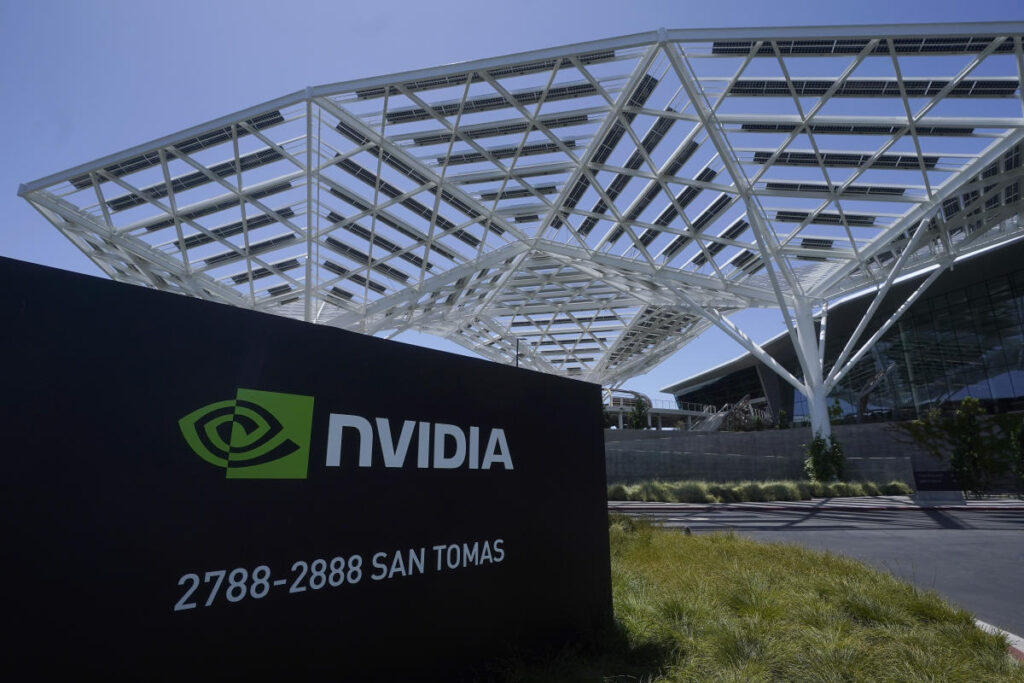Nvidia (NASDAQ: NVDA) experienced a notable decline in its stock price, dropping 4.5% on Tuesday, which reversed part of its previous two-week rally. The downturn was influenced by a Bloomberg report indicating that officials in the Biden administration are contemplating limits on U.S. chip exports to select countries, primarily in the Persian Gulf, citing national security reasons. The initial pre-market response to these potential regulations sent shockwaves throughout the semiconductor industry, leading to similar declines in shares for competitors Advanced Micro Devices (AMD) and Intel (INTC). Unlike Nvidia and AMD, Intel opted not to comment on the developing situation, which adds to the uncertainty surrounding the sector. Analysts have pointed out that while Nvidia doesn’t disclose sales figures for the Gulf region, recent investments in AI emanating from these countries have been significant, and such regulatory constraints could severely hinder the market dynamics for major Nvidia customers like Microsoft, Google, and Amazon.
In addition to geopolitical tensions affecting chip exports, the semiconductor sector was rattled by disappointing earnings from ASML (ASML), a key supplier of equipment to Nvidia’s manufacturing partner TSMC, as well as to Intel. ASML reported third-quarter bookings significantly below analysts’ expectations, with orders totaling only €2.6 billion ($2.8 billion) compared to a forecast of €5.39 billion. This shortfall intensified negative sentiment surrounding the industry, leading the PHLX Semiconductor index (^SOX) to decline by 5.3% on Tuesday, which starkly contrasts the S&P 500’s drop of only 0.7% during the same trading session.
This recent decline for Nvidia marks a reversal from its impressive two-week surge, which culminated in a record closing price of above $138 on Monday. This performance nearly positioned Nvidia to surpass Apple as the most valuable company on Wall Street. The stock rally was predominantly fueled by positive remarks from industry leaders about the escalating demand for AI chips, coupled with renewed optimism surrounding the AI sector. Nevertheless, Nvidia’s stock has exhibited heightened volatility since its 10-for-1 stock split in June, exacerbated by increasing trade tensions particularly linked to the AI chip market, where Nvidia holds a leadership position.
Reflecting on past performance, Nvidia’s share price experienced a similar downturn around this time last year, following the Biden administration’s tightening of export controls on U.S. chips, only to rebound and fuel an extended historic rally. Despite the recent setback, Nvidia’s stock price remains up an impressive 190% year-over-year, emphasizing the substantial demand for its AI chips in the current market. However, this demand is now overshadowed by concerns over potential future slowdowns in AI spending by major tech firms, alongside broader geopolitical risks that could impact the company’s growth trajectory.
Analysts from DA Davidson have voiced apprehensions regarding the sustainability of AI investments, predicting that spending might begin to taper off as early as 2025, which could pose challenges for Nvidia’s future stock performance. Such forecasts have created a mixed sentiment among investors who remain cautious despite Nvidia’s bullish position in the AI chip market. As the company gears up for its upcoming earnings report scheduled for November 19, Wall Street is optimistic, with revenue projections of $33 billion anticipated, reflecting an 82% increase from the previous year. This optimism is backed by a substantial majority of Wall Street analysts, 90% of whom recommend a buy on Nvidia shares, highlighting the stock’s allure despite possible headwinds.
In summary, the recent turbulence faced by Nvidia is a microcosm of the wider challenges within the semiconductor industry, influenced by geopolitical factors and market sentiment. Even as the company showcases strong fundamentals with significant year-over-year growth and high demand for its products, the looming regulatory changes could reshape its operational landscape. Moreover, the potential cooling of AI-related expenditures introduces an element of uncertainty affecting investor confidence. As Nvidia approaches its pivotal earnings report, the juxtaposition of historical performance, current market dynamics, and future expectations will play a crucial role in determining the stock’s trajectory in the coming months.

